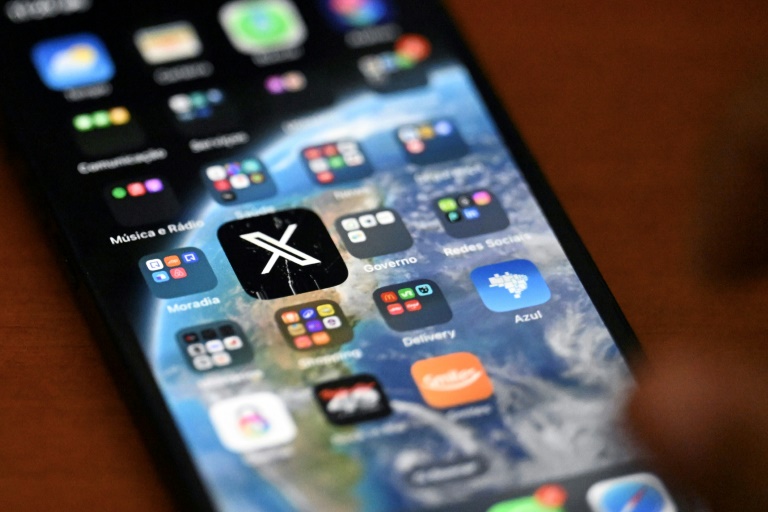Understanding how to sell cryptocurrency is crucial in today’s digital age. Cryptocurrency has become a significant force in the trading of digital assets, goods, and services. With the growing decentralization of the crypto world, more individuals and businesses are investing in cryptocurrencies.
This shift allows businesses to connect with a tech-savvy demographic, offering not just goods and services but also promotional tokens and collectibles like NFTs.
What is the Best Way to Sell Cryptocurrency?
Navigating the world of digital currencies can seem daunting for both newcomers and seasoned investors. There are myriad ways to liquidate your cryptocurrency assets.
You might consider direct peer-to-peer transactions, utilizing specialized Bitcoin ATMs, seeking the services of a dedicated brokerage, or turning to cryptocurrency exchanges, which are often the most recommended route.
Cryptocurrency exchanges, commonly referred to as crypto apps, have gained popularity due to their wide range of available digital currencies and the ease with which users can execute transactions.
These platforms often offer educational tools, real-time market analytics, and security features, further enhancing their appeal.
To utilize such an exchange, individuals typically need to establish an account, undergo a verification process, and link a traditional bank account to facilitate fiat currency withdrawals.
In terms of accepting payment and payment options check out our article on how to accept crypto payments.
Exactly How to Sell Cryptocurrency
Once you buy your cryptocurrencies, there will come a time when you will want to sell them. This is how to sell cryptocurrencies safely.
- Get a Cryptocurrency Wallet
- Choose a Bitcoin Blockchain
- Choose your Currency
- Add Your Cryptocurrency to Your Wallet
- Decide How You Want to Sell Bitcoin
- Develop a Selling Strategy
- Complete the Transaction
- Withdraw to Your Bank Account
1. Get a Cryptocurrency Wallet
A cryptocurrency wallet acts as the first gateway for anyone delving into the realm of digital currency trading. Think of it as a digital purse, crucial for storing, receiving, and sending cryptocurrencies securely.
Beyond merely acting as storage, these wallets play a pivotal role in verifying and recording transactions on the blockchain. Cryptocurrency wallets can manifest as software applications for various devices or as physical hardware devices, each with its own security features.
One crucial consideration when choosing a wallet is compatibility with various cryptocurrencies. As the crypto landscape diversifies, having a multi-currency wallet becomes increasingly beneficial, ensuring seamless trades across a broad spectrum of digital assets.
2. Choose a Bitcoin Blockchain
Blockchain technology, the underpinning foundation of all cryptocurrencies, revolutionizes the way transactions are conducted. These decentralized ledgers, free from the influence of centralized institutions, provide unparalleled transparency and security for all users.
Transactions are recorded in a tamper-proof manner, instilling confidence in users. However, not all blockchains are created equal. Different blockchain platforms may come with distinct features, transaction speeds, and associated fees.
Understanding the nuances of various blockchains, be it Ethereum, Binance Smart Chain, or others, is pivotal for any trader aiming to maximize their returns and ensure smooth transactions.
3. Choose your Currency
The cryptocurrency ecosystem has grown exponentially since the inception of Bitcoin, heralding a new era of digital assets. Today, traders can choose from thousands of cryptocurrencies, each with its unique value proposition, use-case, and market dynamics.
While major players like Ethereum, Litecoin, and Ripple are frequently in the limelight, there are numerous lesser-known coins, sometimes referred to as altcoins, that offer potential opportunities for discerning traders.
However, it’s imperative to approach trading with due diligence. Researching a cryptocurrency’s background, technological framework, team, and community support can provide valuable insights, helping traders make informed choices and mitigate potential risks.
4. Add Your Cryptocurrency to Your Wallet
Venturing into the world of crypto trading necessitates an initial investment. After setting up a digital wallet, the next step involves procuring some cryptocurrency. This can be achieved by purchasing through established exchanges or even receiving payments in crypto for goods or services.
Once acquired, the crypto assets should be transferred securely to your chosen wallet. This migration ensures that the funds are under your direct control, mitigating risks associated with exchange hacks or downtimes.
Familiarizing oneself with the intricacies of sending and receiving cryptocurrencies, including understanding public and private keys, can streamline this process and fortify one’s security practices.
5. Choose How You Want to Sell Bitcoin
There are several ways where you can sell bitcoin or any other cryptocurrency. Below are some available options:
- Cryptocurrency Exchange: Crypto exchanges or Crypto apps act as marketplaces for trading in cryptocurrencies. They offer several tools such as advanced analytics, robust security, user-friendly features, support and offer relatively lower fees that make buying and selling bitcoin or other cryptocurrencies easy.
- Bitcoin ATMs: You can use Bitcoin ATMs or kiosks to sell bitcoin. All you have to do is log in to your account, indicate how much Bitcoin you want to sell, and which crypto wallet address you want to sell from. Once verified you will receive a notification and can withdraw your cash.
- Peer to Peer Exchanges: A Peer-to-Peer (P2P) exchange is a cryptocurrency platform where users can privately exchange crypto with one another without the use of an intermediary. To sell bitcoin on a P2P exchange, users will need to create an account and verify their identity and go about the business of selling bitcoin and other cryptocurrencies.
- Brokerages : Some brokerages facilitate selling bitcoin by acting as intermediaries between buyers and sellers. The downside is they often charge higher commission fees compared to crypto exchanges.
- Face-to-face Transactions: You can also opt to sell your cryptocurrency in-person location through the use of online platforms. All you have to do is simply choose to meet up with a buyer go to bitcoin’s website create an account, verify your identity and connect your bank account. Once you have opened your account you can then send the bitcoin (BTC) you’d like to sell to a specified Bitcoin address. After the sale is processed, you’ll receive cash in your bank account.
6. Have a Strategy for Selling Bitcoin
Whether your cryptocurrency investment is to sell them off for potential growth in the future or trade cryptocurrencies regularly to maximize profits and revenues you will need to formulate a concrete strategy.
Your strategy should include what to buy be it a bitcoin, a digital asset, or NFT; when to buy crypto; how much to buy; and when to sell your cryptocurrencies. To know more about cryptocurrency and taxes check out our article do you have to pay taxes on cryptocurrency.
7. Complete the Transaction
In the digital landscape of cryptocurrencies, transactions work differently than conventional bank transfers. The core principle involves utilizing a private key, a cryptographic equivalent of a password, to authorize and initiate the transfer of cryptocurrency to its intended recipient.
Once this is done, the transaction is then propagated across the network, awaiting confirmation by network nodes.
This process is crucial to ensure the integrity and irreversibility of the transaction. It’s worth noting that while the decentralized nature of cryptocurrencies offers many advantages, it often comes with associated costs.
Users typically incur network fees, essentially compensatory amounts paid to incentivize miners or validators who play a pivotal role in verifying and recording transactions on the blockchain. Being aware of these fees and planning transactions accordingly can help users optimize their expenses.
8. Withdraw Cryptocurrency to Your Bank Account
The culmination of a crypto sale often involves converting your digital assets back into fiat currency, though the process can vary based on individual preferences and immediate financial needs.
For those wishing to liquidate their crypto holdings, various platforms provide an option to directly transfer the funds to linked bank accounts. This conversion is facilitated by the exchange, which acts as an intermediary, converting your cryptocurrency into your local fiat currency.
While this offers a seamless way to access your funds, it’s vital to be cognizant of potential withdrawal fees, which differ across platforms and are deducted from the withdrawn amount.
For more immediate access to funds, some platforms even offer transfers to debit cards, enabling users to spend their funds without the need for a bank transfer, further enhancing the flexibility of the crypto realm.
Choosing the Right Method to Sell Your Bitcoin
With various options available to sell your Bitcoin and other cryptocurrencies, it’s essential to understand the pros and cons of each method to make an informed decision. The table below offers a quick comparison of different selling methods to help you identify which one aligns best with your preferences and requirements.
| Method | Pros | Cons |
|---|---|---|
| Cryptocurrency Exchange | Advanced analytics, user-friendly, lower fees | Requires account setup |
| Bitcoin ATMs | Instant cash withdrawal, simple | Limited availability |
| Peer to Peer Exchanges | Private transactions, no intermediaries | Requires identity verification |
| Brokerages | Acts as intermediaries, simplifies process | Often higher commission fees |
| Face-to-face Transactions | Direct and personal, potential for cash transactions | Safety concerns, requires meeting in person |
How do you convert crypto to cash?
Cryptocurrencies, while revolutionary in their design, still operate within a global financial system that predominantly uses traditional fiat currencies. As such, there often comes a time when crypto holders wish to convert their digital assets into cash. Here’s a more in-depth look at how you can do this:
1. Using Cryptocurrency Exchanges: This is perhaps the most popular method. Crypto exchanges like Coinbase, Binance, and Kraken offer platforms where users can sell their cryptocurrencies for fiat money. After selling your crypto on these platforms, you can request a withdrawal, and the money will be transferred to your linked bank account. It’s worth noting that these transactions can come with fees, and the exchange rate might vary slightly from the current market rate.
2. Brokerage Services: Some cryptocurrency enthusiasts opt for broker services that specialize in large transactions. These brokers can help liquidate substantial amounts of cryptocurrencies at favorable rates, especially useful for large investors or institutions.
3. Bitcoin ATMs: These are physical kiosks similar to regular ATMs. However, instead of withdrawing cash from a bank account, users can exchange their Bitcoin for cash. While incredibly convenient, especially for smaller amounts, it’s essential to be aware that Bitcoin ATMs often have higher transaction fees than online platforms.
4. Crypto Debit Cards: Some companies offer cards that allow users to spend their cryptocurrencies just like they would with a conventional debit card. When used, the required amount of cryptocurrency is converted into cash in real-time, making transactions seamless. It’s an innovative way to bridge the gap between the digital and physical realms of finance.
5. Peer-to-Peer Transactions: Another method to convert crypto to cash is through peer-to-peer platforms or even in-person transactions. Platforms like LocalBitcoins connect buyers and sellers directly. Here, you can find someone willing to buy your cryptocurrency for cash. However, this method requires caution due to potential fraud risks.
In conclusion, while cryptocurrencies offer a novel approach to finance, the need for cash remains. Thankfully, various methods have emerged to facilitate the conversion of crypto to fiat, each catering to different needs and preferences.
As always, it’s crucial to prioritize security and be aware of any associated fees when converting your crypto holdings into cash.
What is the cheapest way to buy and sell cryptocurrency?
Investing in cryptocurrencies over exchanges is the cheapest way to sell and buy bitcoin. For example, the Binance app exchange offers competitive rates and is compatible with multiple devices. In addition, it offers low trading commissions and payments can be made via bank transfer, credit or debit card, and cash. For insights on purchasing bitcoin check out our article How to Buy Cryptocurrency.
Image: Depositphotos






)




